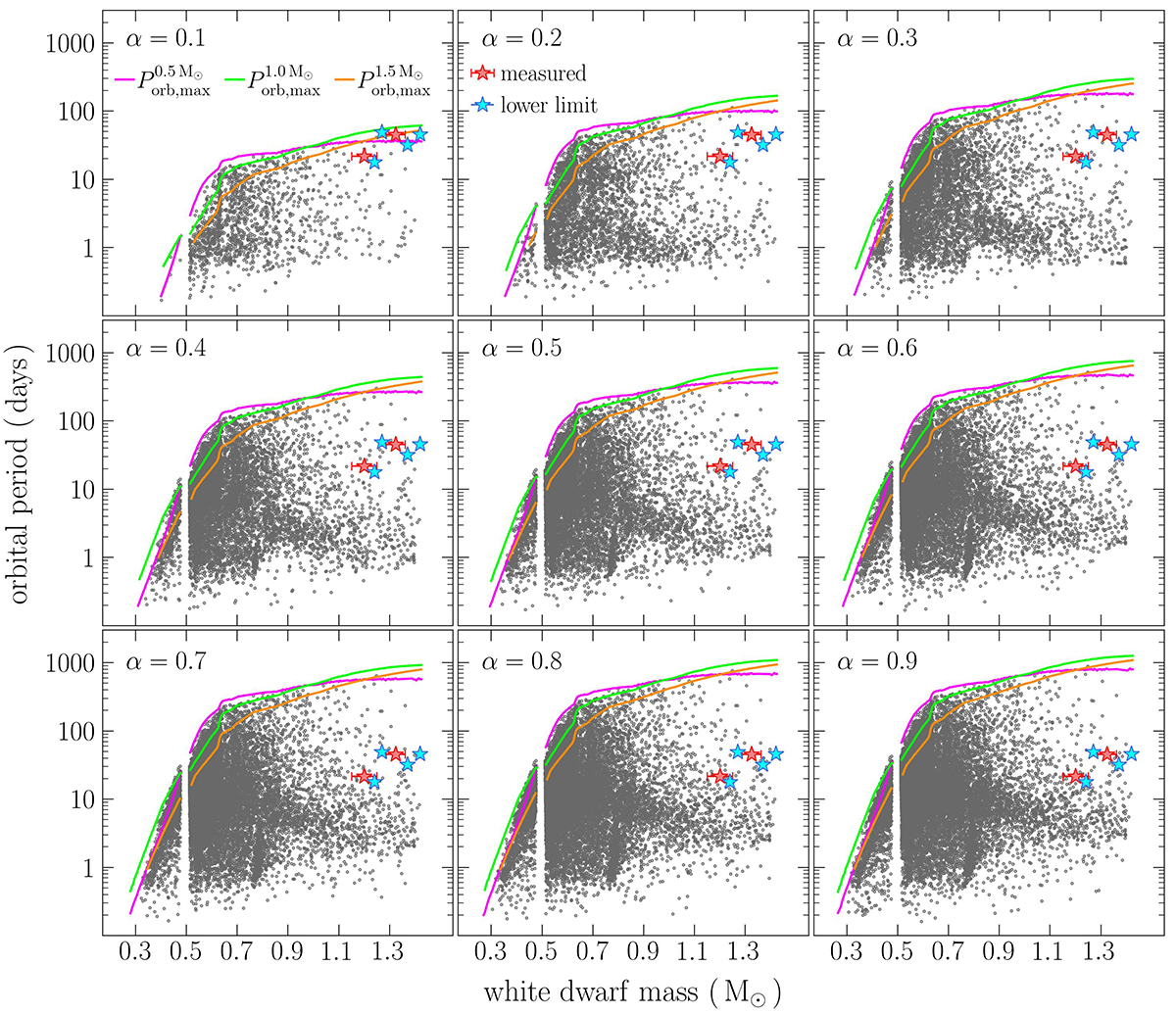Fig. 1.

Download original image
Distribution of present-day detached post-CE binaries with main-sequence stars of spectral type earlier than M (i.e. masses greater than 0.5 M⊙) in the plane WD mass vs orbital period (grey circles), each panel corresponding to a different choice of the CE efficiency α. Also included in each panel is the maximum orbital period as a function of the WD mass, for zero-age companion masses of 0.5 M⊙ (magenta line), 1.0 M⊙ (green line), and 1.5 M⊙ (orange line). Also included are the six known long-period post-CE binaries with oxygen-neon WDs and low eccentricity listed in Table 1: two have measured WD masses (red stars), and five only have lower limits for the WD mass (blue stars). In all simulations, no extra energy source other than the orbital, the gravitational, and the thermal was adopted in the CE energy budget. All known systems can be easily explained assuming α ≳ 0.2. In addition, for a given WD mass, the greater the α, the longer the maximum orbital period. For α ∼ 1, even post-CE binaries with orbital periods as long as a thousand days can be explained.
Current usage metrics show cumulative count of Article Views (full-text article views including HTML views, PDF and ePub downloads, according to the available data) and Abstracts Views on Vision4Press platform.
Data correspond to usage on the plateform after 2015. The current usage metrics is available 48-96 hours after online publication and is updated daily on week days.
Initial download of the metrics may take a while.


